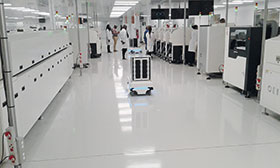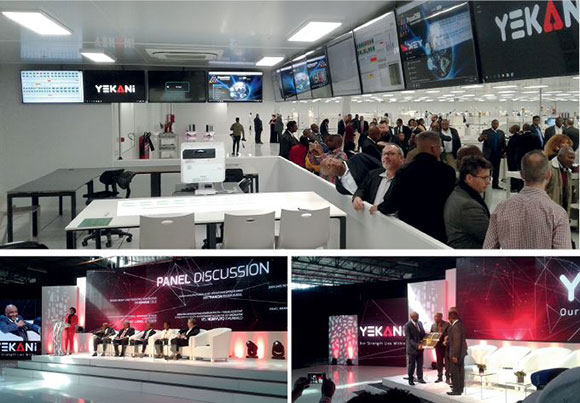

Hundreds of guests and members of the media gathered at an extravagant opening ceremony in East London on 5 June to witness the unveiling of what is said to be the biggest SMT manufacturing plant in Africa – possibly even the biggest in the southern hemisphere.
In the South African electronics manufacturing context, the name Yekani entered the fray when Yekani Multimedia bought a 38% stake in Vektronix, a contract manufacturer best known for its DSTV decoder production. In 2016 that stake rose to 100% and Yekani Manufacturing was born in 2017. Fast forward to the present and Yekani has used a R1 billion investment (funded by the DTI, banking institutions and the company itself) to build a new 28 000 square metre facility that is three times the size of the former Vektronix plant.

So what does R1 billion buy you? Besides the building itself, 11 SMT production lines boasting state-of-the-art equipment for what Yekani’s CEO, Dr Siphiwe Cele, hailed as the cornerstone of South Africa’s, and Africa’s, entrance into the fourth industrial revolution. Employing the latest cutting-edge technologies and processes, the facility truly epitomises the phrase ‘smart manufacturing’ and, once fully up and running (which is expected to happen within the next couple of months) it will have a placement capacity of close to 1,5 billion components per hour.
Speaking at the opening ceremony, Akhiro Yamasaki, director of Panasonic (whose pick-and-place machines are used in the factory), said that the new facility is one that South Africa can be proud of as truly world-class. A Panasonic spokesman explained that the technology deployed goes beyond just equipment by addressing more complex issues such as cyber-security. He stated that this technology is not only state-of-the-art but also forward thinking, and will enable future advancements that will further improve productivity.
All that capacity requires a lot of people to run things, and the hope is that in the medium term the factory will create another 1000 jobs over and above the 500 or so currently employed. Cele underlined the role Yekani wants to play in helping employment in the East London area, with an emphasis on creating jobs for the youth and, in particular, women (who make up 90% of the staff at the existing plant in Wilsonia).
“Our technologically advanced facility is geared to manufacturing innovative technology products for clients in the automotive, defence, aerospace/aviation industries as well as consumers,” Cele stated. “We want the world to know that Africans are capable of pioneering new technology and at Yekani we have this belief that our strength lies within our biggest asset: our people.”
Such a huge undertaking requires a lot of business to keep the wheels turning, and Cele called on government to put its money where its mouth is and support its commitment to increasing local procurement by purchasing Yekani products. However, he also urged for support beyond the simple purchasing of products, and expressed the company’s eagerness to take on world-class technology development projects, backed by its newly formed R&D department.
Yekani has outgrown its contract manufacturing roots and is fast becoming a major player in the South African OEM market. It is already producing its own tablets, laptops and mobile phones, and aims to become the largest smartphone company in the country. It also makes a range of education devices (some of which have been supplied to the Gauteng department of education) which includes interactive whiteboards, touch-enabled LED displays, tablets and laptops. The company is also exploring digital radio as a technology with strong growth potential.
In his closing address, minister of trade and industry, Dr Rob Davies, said he envisions the new Yekani facility as a stepping stone for South Africa to move out of the losing position it occupied in the third industrial revolution, and into a winning place in the fourth.
© Technews Publishing (Pty) Ltd | All Rights Reserved